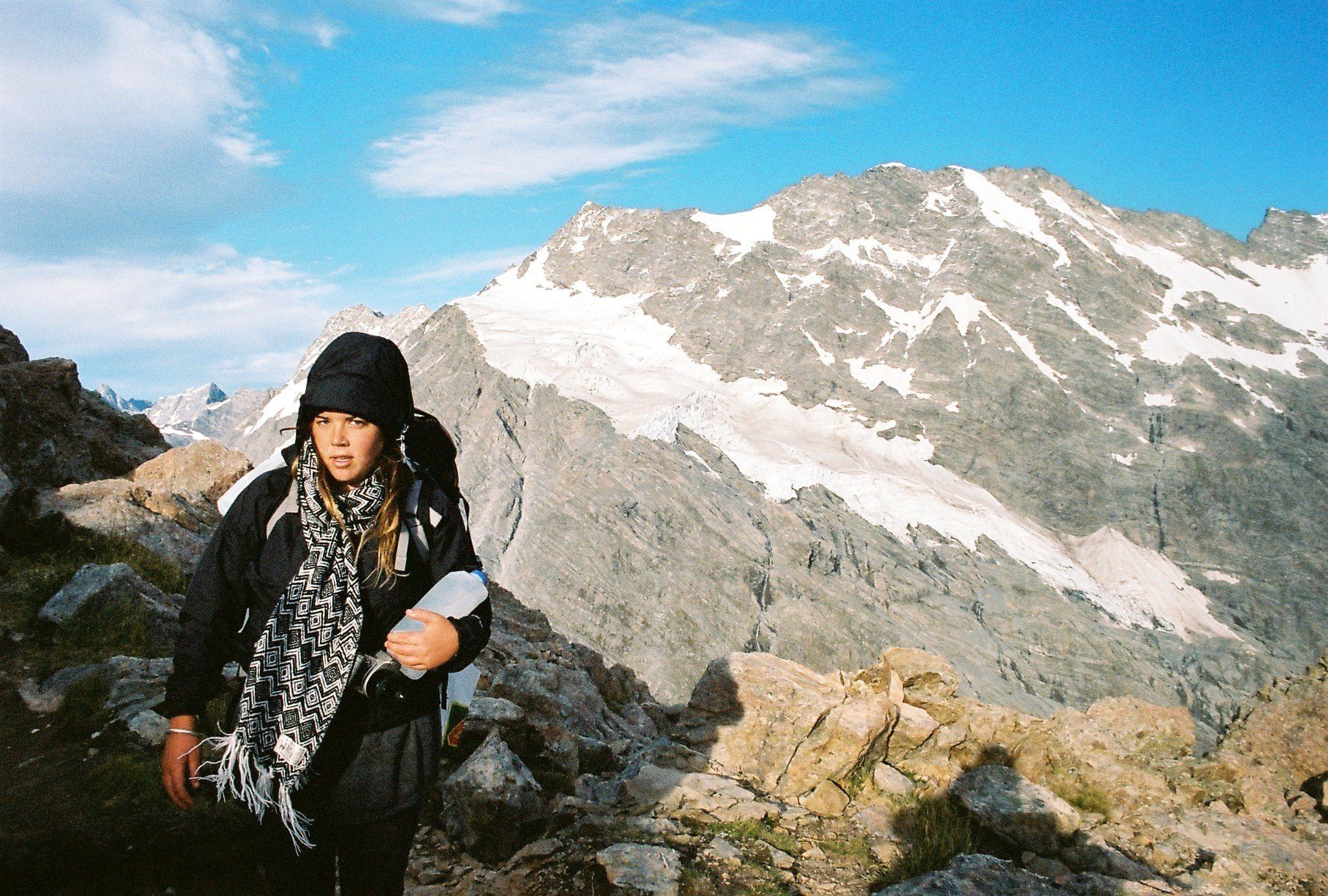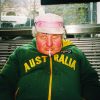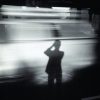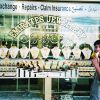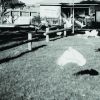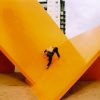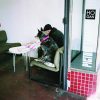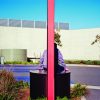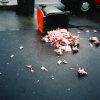Did you ever have a Tumblr growing up? Ever feel that the days of racy GIFs, or images with a vintage-filter are remnants of a long lost age?
Well, that Tumblr generation has grown up.
Whether they’re print-makers, wood-carvers, or any other of the stereotypes once re-blogged to procrastinate, this is one generational grouping that the internet looks to and says “hey look! they’re a thing now”.
And this latest “thing” has been chronicled in photobook form from local photographer, Bec Capp. Titled Street/Stop, this indie publishing venture captures Melbourne street photography, now. But, unlike the NGV’s cherry-picked blockbuster, Capp has brought together a patchwork quilt of the city’s analogue shutterbugs without big names nor big egos.
“I just saw heaps of people doing street photography, and it was really awesome, and I didn’t feel it was really a thing,” she said.
Capp was initially Graphic Designer by trade, taking a studio lighting course studying abroad in Germany in addition to photo units during her undergrad back in Melbourne.
Much like most twenty-somethings trying to figure out their direction with an abundance of opportunities—albeit with far narrower avenues to paid work—Capp brought herself to photography via Who The Hell, Australia’s oldest music blog.
With that came along with access to free gigs and intimate portraits of musicians.
“I think there was a moment at Meredith when everyone had an amazing amount of gear and I thought ‘Fuck!’ I need to do this. I guess I started going to gigs all the time, and I started taking photos … and they were terrible, crappy Lomo, Holga sorta things. I bought one digital lens and at the same time, I took heaps of film photos, and then ditched the idea of investing in digital.”
And it’s film that weaves itself through each of the photographers present in this book. Contrary to the seeming death of film as a medium—and contrary to popular opinion that film photography is just a hipster’s pastime—Melbourne has benefited from the turn back to this analogue form.
The opening of independent photo-lab Hillvale is just one proponent of film’s resurgent narrative, not to mention publications such as Stolen who only source analogue content. Street/Stop can now add itself to this story, reflecting a snapshot of this current mood.
“I think with Hillvale, and places like it, film’s becoming more of a community. This [Street/Stop] was so easy to do because everyone’s so willing to work with each other.”
And it’s this sense of community that seems to underpin Street/Stop’s grand narrative.
“People have said that it’s awesome that I’ve gotten this group of people together. For some, it’s the first thing they’ve been published in, even though they’ve been doing street photography for a long time.”
While the gaps between creative emergence and establishment lie on a tedious spectrum in the creative world, the book manages to draw upon photographers who sit in-between.
“I feel like this is a younger generation of people shooting film … There’s definitely some people in there who I’ve known for quite a while, like Sarah Pannell or Jack Shelton just via Tumblr. And then there’s Robyn Daley, who’s had a few things published or self-published that I’ve seen. And the rest were friends or people suggested to me, or random people I follow on Tumblr, like Alex [Schoelcher].”
One of the more intriguing things about this book is that the works are born out of cultures of isolation.
This collaboration wasn’t born out of some ‘cool’ social clique, but a bunch of local photographers who have just so happened to emerge at the same time—each bringing their own aesthetic of ‘the street’. Many in this book haven’t met in person.
Locals on this list range from those who study photography, or those who have come to the form with a zeal moving well past the amateur.
So then who and what defines this loosely aligned grouping of ‘street’ photographers?
“A few people asked me what kind of street photography do you want, or how I wanted to define it. I wanted them to just send me what they thought street photography was, and for some reason if I didn’t think it fit I cut it.
“And it’s a very vague term. You could have street fashion, but I think the thing I’m going for is something that’s not contrived: something that you see happening. Whether you go up to someone and ask to take their portrait, or if you take a candid photo, the definition doesn’t really matter.”
Capp’s curatorial approach is stated from the very start of the book, using a quote from Elliott Erwitt:
“To me photography is an art of observation, it’s about finding something interesting in an ordinary place, I found it has little to do with the things you see, and everything to do with the way you see them.”
It’s fitting that Capp also finds herself in a Masters of Art Curatorship at the University of Melbourne right now. Her incorporation of Erwitt’s ideas is something that’s reflected throughout each photographer.
“Like there’s a photo of Alex’s in there with a guy who’s asleep with a lit cigarette in his mouth at a bus stop, and I just found that picture really funny, but I guess you could look at it and say ‘that’s really sad’.”
It’s an anomaly that Capp took on this project alone, rejecting crowd-funding in a time where small creative ventures seem to thrive off it.
“I hate Kickstarter. I mean it works for people obviously, if people need money. I don’t like hyping up something that doesn’t exist yet—but maybe I would do it if I did another one. Me going “Hey guys I’m going to make a book about photography” would mean my friends would probably donate money to me, but not want to, or not care that much about it”
“The bank paid for Street/Stop, so people better buy the book otherwise I’ll be in debt.
In a sense, the entire book can be seen as an anomaly, too. The idea of chronicling something in print which now is superseded by the grouping of photography via hashtags, pins, or blogs, could almost seem anachronistic—something which can also be said about the medium that it represents.
“I just don’t like the endless photo-taking of digital cameras. You just don’t think that much because you just take it and think, ‘Oh, I can just fix it later’ or you take ten and only one of them will be good. You want to be trying to be quicker and more precise—you’ve only got 36 frames that are going to cost you minimum eight dollars to develop.
“Training your brain to think like that will make you take better photos. And it’s not that hard.”
So it’s funny how this book can almost be seen as a response to the nature of photography now. Coupled with the fact that the virtual world has led humanity to an unprecedented amount of visual literacy, photographers the world over exist in a time where their craft is being re-contextualised on daily basis.
Maybe Street/Stop then,is a worthwhile pause when you about the sheer exponential growth of image-making in a virtual era.
Street/Stop launches this Friday at Schoolhouse Studios from 7pm.
By Alan Weedon
Photo courtesy of Bec Capp

